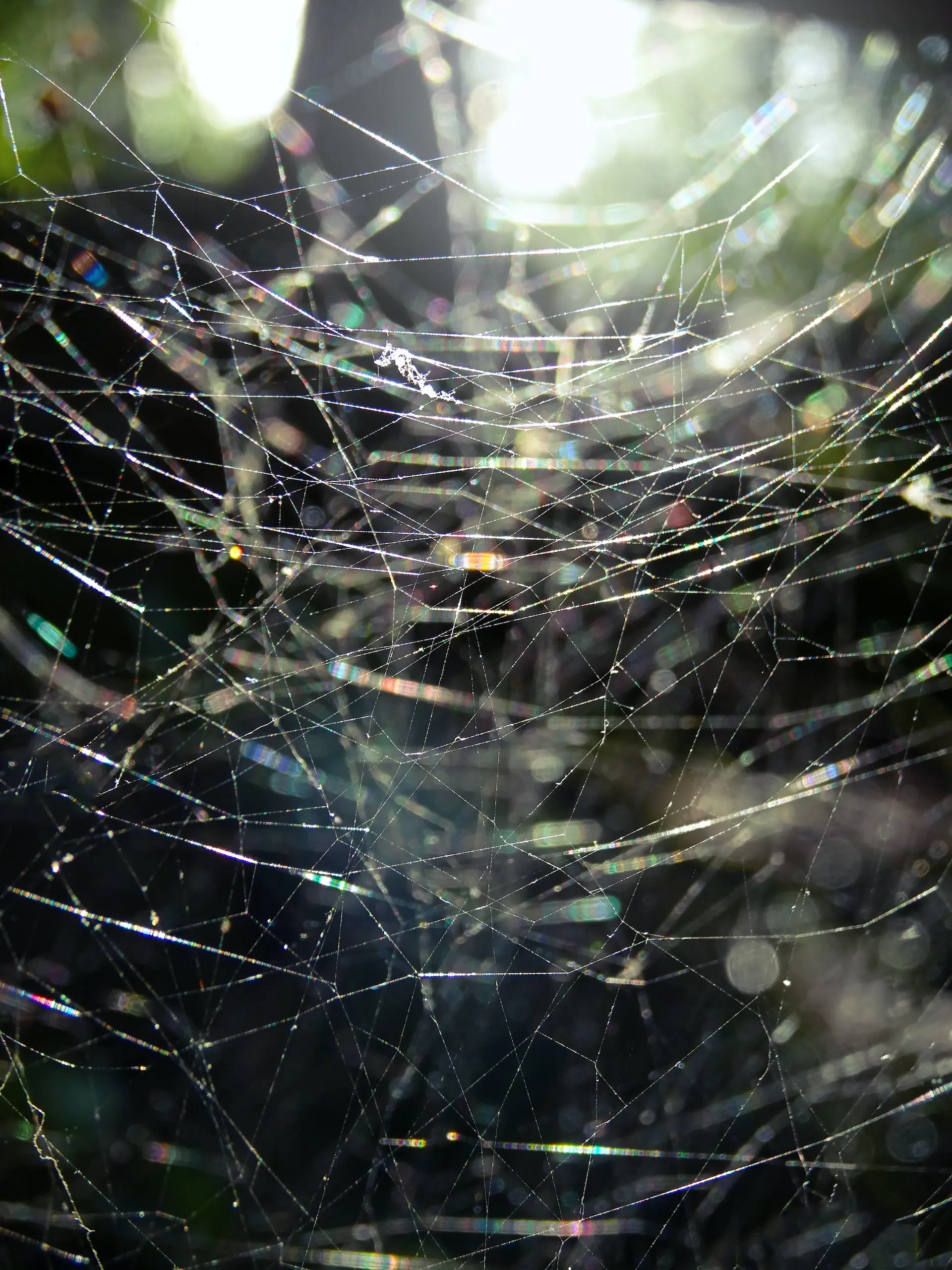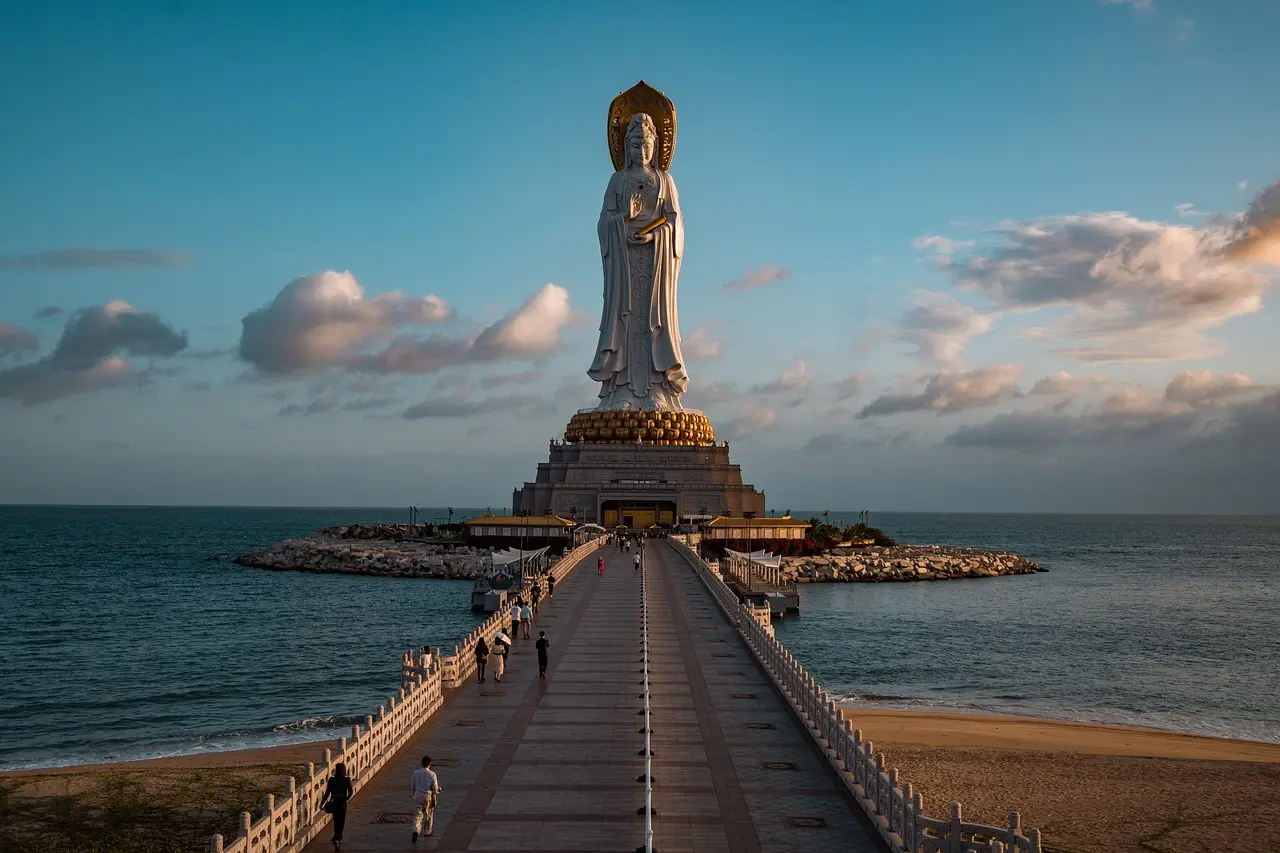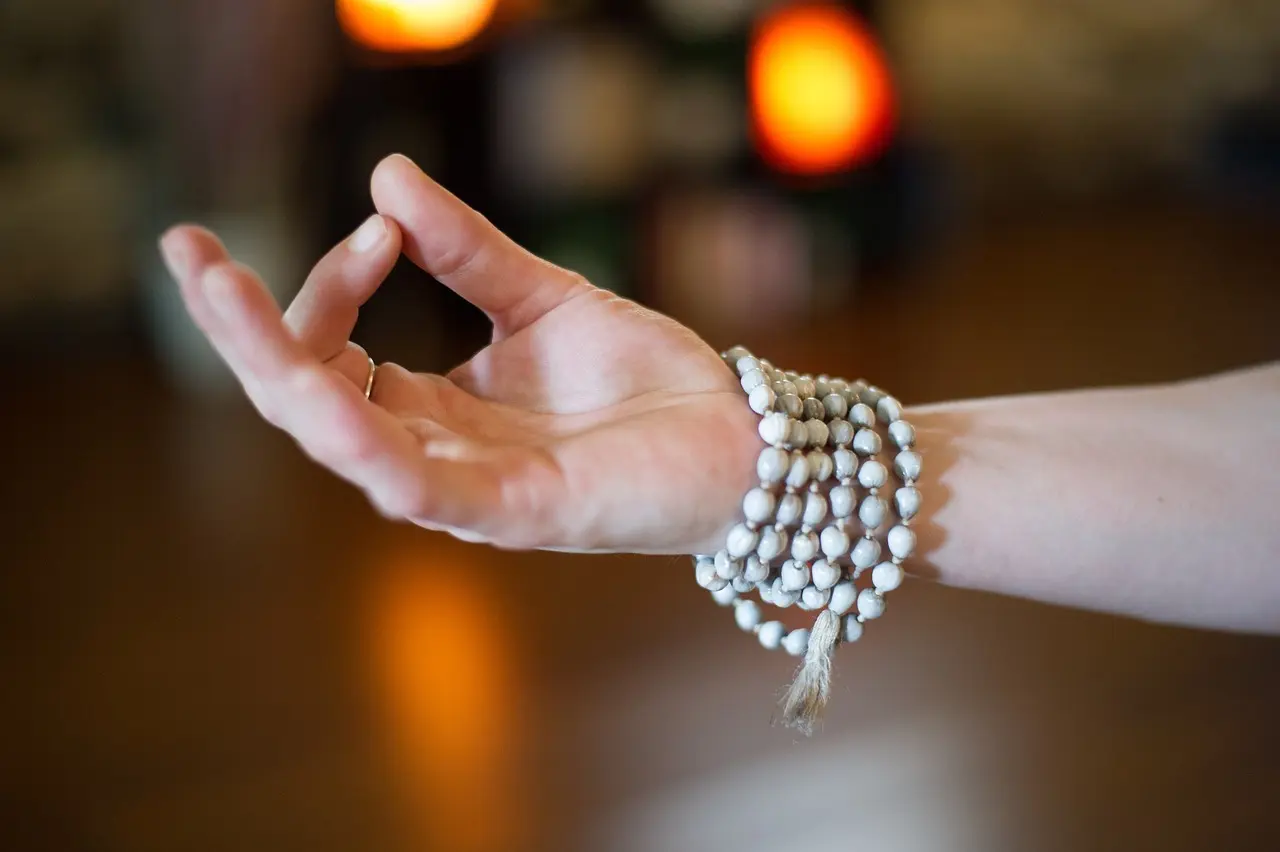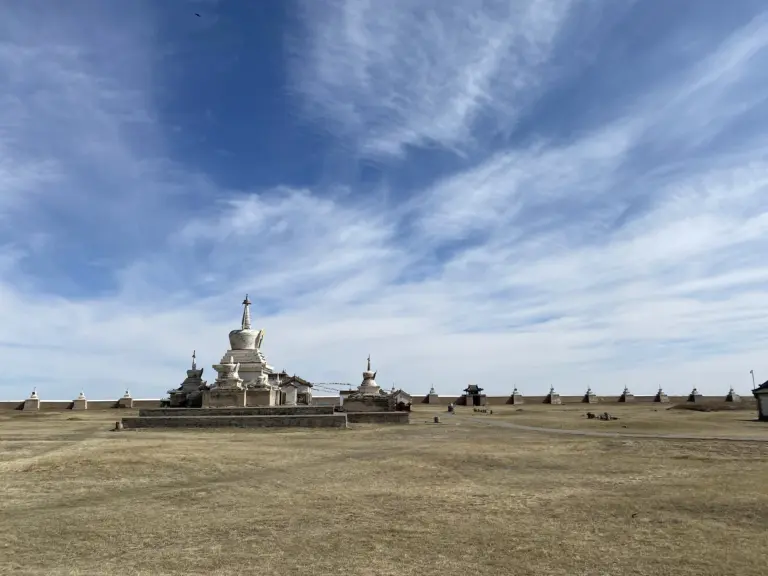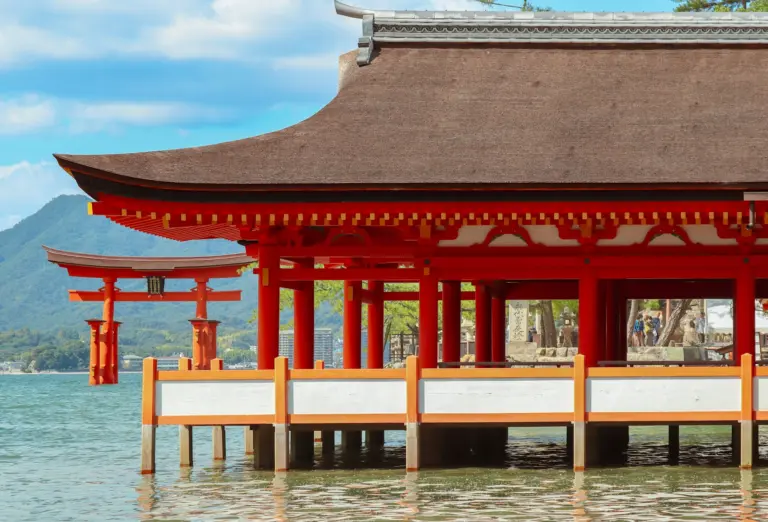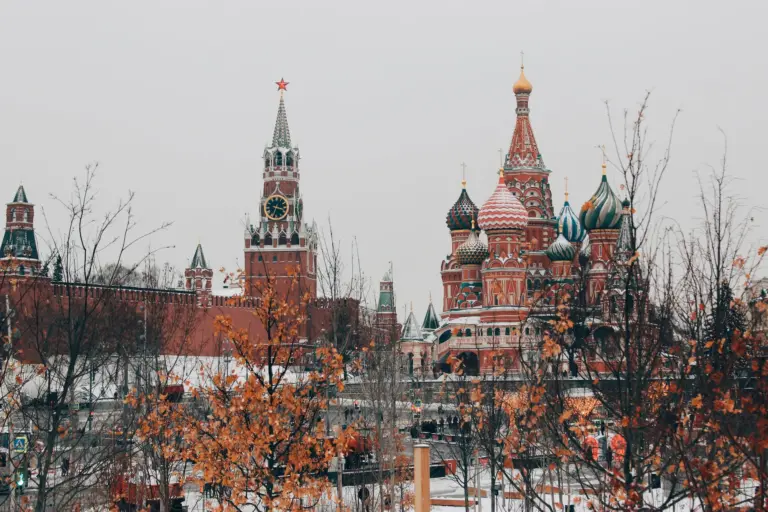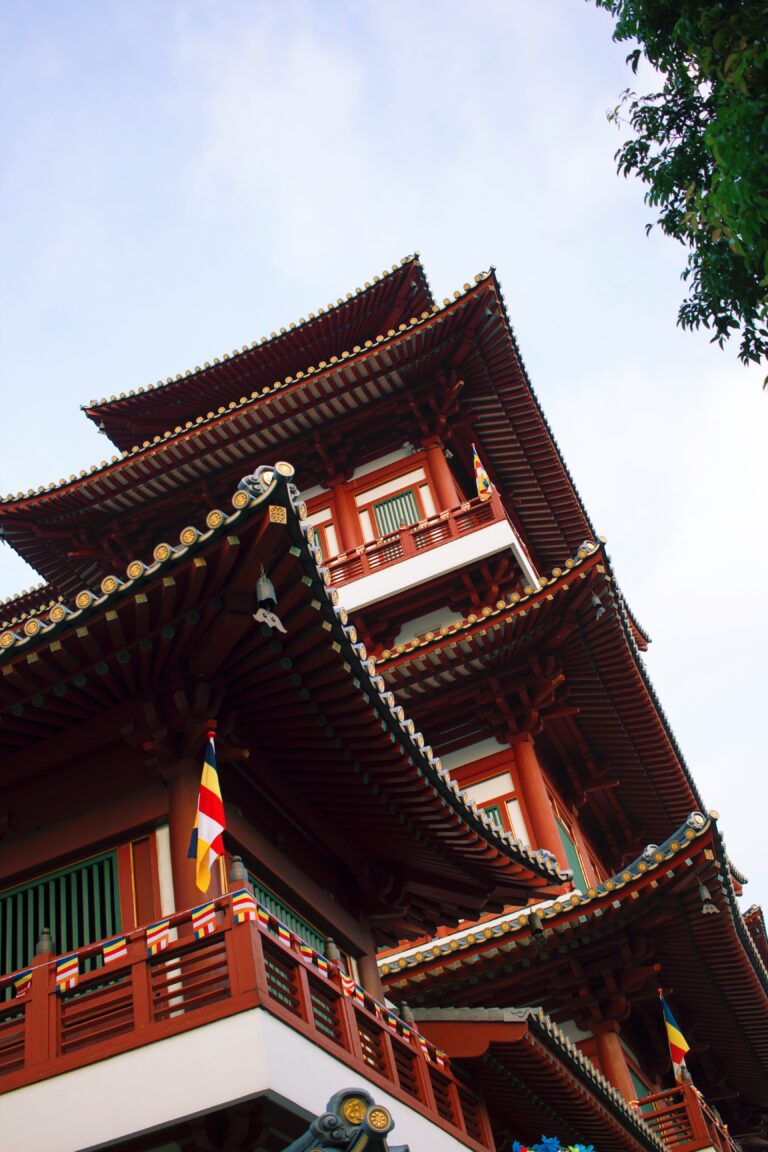Are you ready for an adventure in one of Bali’s most enchanting towns? Look no further than Ubud! Located in the central uplands of Bali, Ubud is a hub for art, culture, and spirituality.
Ubud is surrounded by rice paddies, jungles, and steep ravines, which also make for stunning natural scenery.
The town is also home to many ancient temples and shrines, which are an important part of Bali’s unique heritage.
Balinese culture is quite different from the rest of Indonesia as you may notice once you step foot in Denpasar’s airport. I can’t possibly forget the moment I heard the unique blend of Balinese music while being greeted by the mythical Barong, I knew right there and then: Bali was going to be amazing.
Ubud is usually the first stop for a lot of travelers and for good reason! From its amazing art galleries to yoga retreats, let’s dive into what exactly makes Ubud a must-see destination in Bali!
Table of Contents
ToggleHistory of Ubud
The history of Ubud is closely intertwined with the Bali, as it is one of the island’s oldest and most important cultural centers.
The name “Ubud” comes from the Balinese word “ubad,” which means medicine, and reflects the town’s historical importance as a center for traditional healing and medicine.
Ubud is believed to have been founded in the 8th century AD by a Javanese priest named Rsi Markendya, who established a small temple and meditation center in the area.
Over time, the temple and surrounding village grew in size and influence, and Ubud became an important spiritual and cultural center for the island.
In the 16th century, Ubud and the surrounding area came under the control of the powerful Majapahit Empire, which helped to further solidify Ubud’s status as a center for art, culture, and religion. The Majapahit period saw the developmen
t of Balinese classical literature and drama, as well as the construction of many temples and shrines in and around Ubud.
In the 20th century, Ubud experienced a resurgence of interest from artists and writers who were drawn to the town’s natural beauty and unique cultural heritage. This led to the development of a thriving arts scene, with local artists producing a wide variety of paintings, woodcarvings, and other crafts that reflect Ubud’s rich cultural traditions.
Balinese Culture Overview
Balinese culture is a rich and diverse blend of Hinduism, animism, and local customs that has evolved over thousands of years.
It’s deeply rooted in spirituality and is characterized by elaborate rituals, colorful ceremonies, and traditional arts and crafts.
One of the most distinctive features of Balinese culture is its unique form of Hinduism, which is known as Balinese Hinduism.
Balinese Hinduism is syncretic religion that combines local beliefs and practices, such as animism and ancestor worship, with the teachings of Hinduism brought to the island by Indian traders and priests centuries ago.
Best Places to Visit in Ubud

1. Sacred Monkey Forest Sanctuary
The Sacred Monkey Forest Sanctuary is one of the most popular attractions in Ubud. I really enjoyed this place as you really get the best of both worlds from the jungle vibes and the adorable (but mischievous) monkeys to the ancient temples tucked away deep in the forest. It’s also a great place to escape the heat as you’ll be tucked under lush trees.
This sanctuary is home to hundreds of playful macaques who roam freely. It’s said that the Lord of the Monkeys, Hanuman, is one of the guardians of the shrine in the sanctuary. As you explore the sanctuary, you’ll see the monkeys swinging from tree to tree, playing with each other, and interacting with everyone.
The baby monkeys were particularly cute as they cling on their moms. Just be careful and be sure to respect the monkey’s space as I saw one of them bite a guy for getting too close and just outside a group of monkeys were tearing apart a poor guy’s motorcycle seat too.
Cost: 80,000 IDR (5 USD)
2. Campuhan Ridge Walk
The Campuhan Ridge Walk is a scenic hiking trail that offers stunning views of Ubud’s natural beauty and it’s great if you want to get away from the hustle and bustle of the town.
The trail begins at the Campuhan Bridge and winds its way through lush green hills, rice paddies, and small villages, providing breathtaking views at every turn.
As you walk along the trail, you’ll be surrounded by the sights and sounds of nature, with birds chirping, butterflies fluttering, and the gentle rustling of the wind through the trees.
One of the highlights of the Campuhan Ridge Walk is the stunning view of the Wos River Valley, which stretches out before you in a panorama of green hills and terraced rice paddies. Try to get this view around sunrise or sunset, when the sky is awash with vibrant hues of pink, orange, and purple.
You can also join a walking tour that starts at Campuhan Ridge Walk and visits most of the sites on the list.
Cost: Free
3. Ubud Palace
The Ubud Palace, also known as Puri Saren Ubud, is a beautiful palace built in the 1800s, the palace was once the residence of the royal family of Ubud.
Ubud Palace has regular dance performances that take place in the palace courtyard. You can catch traditional Balinese dances, such as the Legong dance and the Barong dance, which are accompanied by live gamelan music!
Cost: Free
4. Saraswati Temple
The Saraswati Temple, also known as Pura Taman Saraswati, is a beautiful Hindu temple located in the heart of Ubud. The temple is dedicated to the Hindu goddess of knowledge, music, and the arts, Saraswati, and is considered to be one of the most important spiritual sites in the town.
Similar to Ubud Palace, you can also watch Balinese dance performances here but both will cost some money.
The temple’s entrance is marked by a picturesque lotus pond, filled with blooming lotus flowers and surrounded by lush greenery. The bridge that goes through the pond leading to the temple is one of the most photogenic spots in Ubud.
Cost: Free
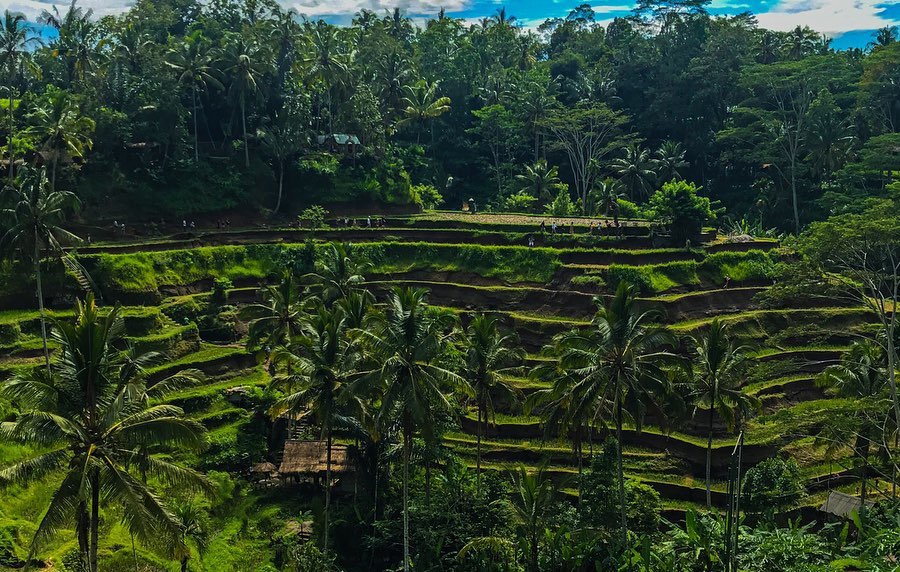
5. Tegalalang Rice Terraces
The Tegalalang Rice Terrace are one of the most iconic places in Ubud. I’m sure you have seen their pictures plenty of times. These stunning rice paddies are a means to see traditional Balinese farming practices up close.
The terraces are still farmed using traditional techniques, which have been passed down through generations.
The terraced rice fields are a beautiful sight to behold, with their green fields stretching out as far as the eye can see, framed by towering coconut trees and tropical vegetation.
You can walk along the narrow paths that wind their way through the rice terraces, providing stunning views at every turn. Some areas would cost some money to enter such as the other half of the terraces as well as activities such as the swings.
Cost: Free but donations are greatly appreciated
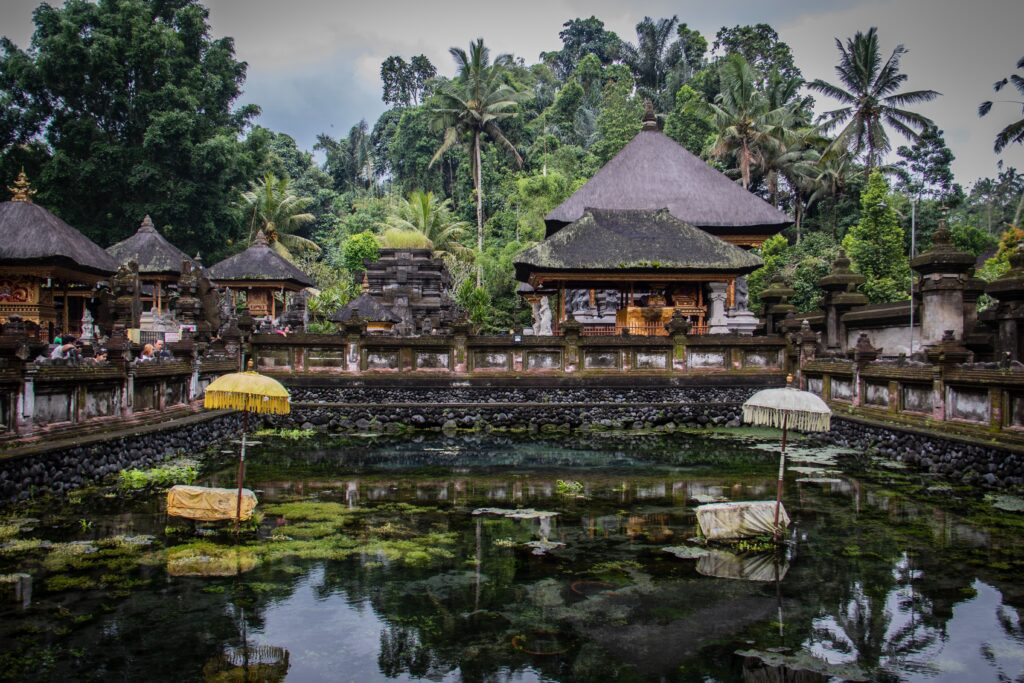
6. Pura Tirta Empul
Pura Tirta Empul is a beautiful and sacred Hindu temple located in the village of Tampaksiring, just a short drive from Ubud. We rode a scooter to get here which could be rented in plenty of places around Ubud. You need to wear a sarong to enter the temple.
The temple is famous for its holy spring, which is believed to have healing powers and is used for ritual purification by Balinese Hindus.
The temple’s main attraction is a large rectangular pool filled with crystal-clear water, where you can participate in the ritual purification ceremony known as “melukat”. The ceremony involves immersing yourself in the pool and moving through its 13 fountains, which represent different virtues such as strength, courage, and love.
You can join a shamanic spiritual cleansing tour that includes a visit to Tirta Empul through here.
I also recommend going around the temple, away from the holy spring as you’ll be able to get away from the crowds and see some of the intricate architecture up close.
We were even able to chance upon a prayer ceremony before being shooed away.
Cost: 50,000 IDR (3 USD)
7. Pura Gunung Kawi
Pura Gunung Kawi is another ancient temple complex in Tampaksiring, you can go here right after visiting Tirta Empul as it is only a short drive away.
The temple is believed to have been built in the 11th century, and is one of the oldest and most important spiritual sites on the island of Bali.
The temple complex consists of 10 shrines, or candi, carved into the face of a cliff, with each shrine dedicated to a different member of the Balinese royal family. The shrines are massive, up to 7 meters (23 feet) tall, and are intricately carved with elaborate designs and patternss.
The site is particularly beautiful when viewed from the bottom of the valley, as you can see the majestic shrines rising up from the cliff face. The temple is considered to be a place of great energy and power, and many people come here to meditate and offer prayers to the gods.
Cost: 50,000 IDR (3 USD)
8. Kanto Lampo Waterfall
Kanto Lampo Waterfall is a beautiful and secluded waterfall located in the Gianyar regency, just an hour drive away from Ubud. The waterfall is tucked away in a tropical jungle, and offers a peaceful and serene atmosphere.
To reach the waterfall, you’ll hike down a narrow path that winds its way through the jungle, you’ll be rewarded by a stunning display of cascading water, which falls into a crystal-clear pool below. The pool is perfect for swimming and cooling off on a hot day, and the surrounding rocks provide a great place to relax and soak up the scenery.
Cost: 10,000 IDR (1USD)
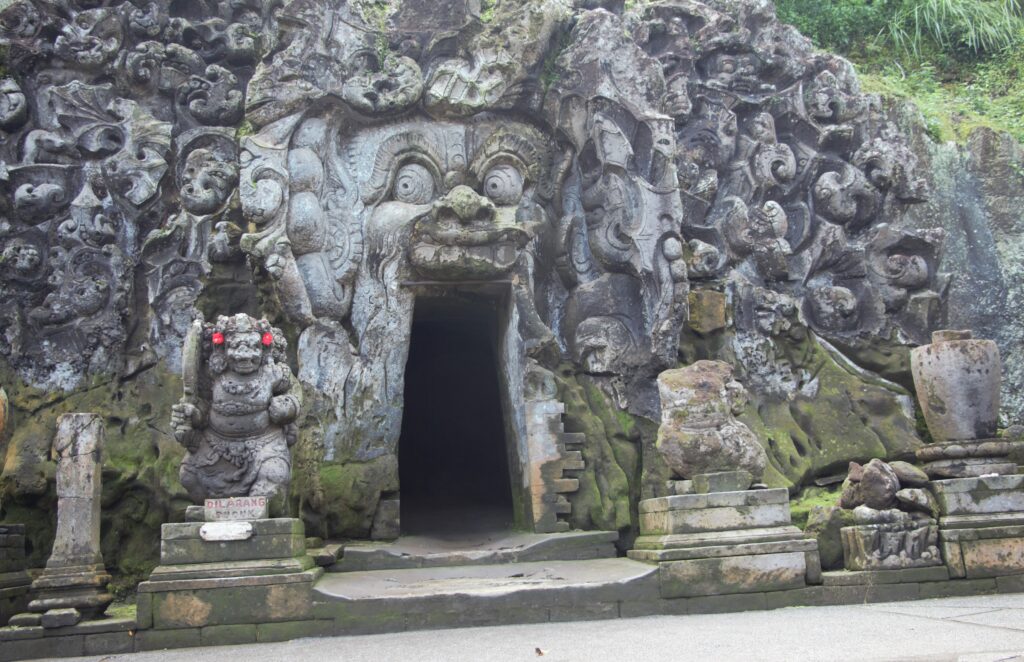
9. Goa Gajah, the Elephant Cave
Goa Gajah, also known as the Elephant Cave, is an ancient temple that is believed to have been built in the 9th century. The temple is named after the statue of a mythical creature that guards its entrance, which is carved into the rock face and resembles an elephant. Though the face is the most popular site, Goa Gajah is much more than that.
The temple complex includes a central courtyard, several ornate shrines, and a series of caves and tunnels to explore. The caves have been built for the purpose of spiritual meditation.
Cost: 50,000 IDR (3 USD)
Hidden Gems in Ubud

10. Gunung Kawi Rice Terraces
If you find that the Tegalalang Rice Terraces to be too touristy, there’s also another lesser-known terrace near the Gunung Kawi temple complex that’s just as beautiful and without the crowds. You’ll more than likely come across it if you’re visiting this spiritual temple complex.
Cost: Free
11. Uma Anyar Waterfall
If you’re looking for a hidden gem in Bali, you won’t want to miss Uma Anyar Waterfall. This stunning multi-layered waterfall was recently opened to the public in 2020. Why you ask? Uma Anyar Waterfall has been a well-kept secret among locals for years, but with the impact of Covid-19 on tourism, they decided to open it up to attract more tourists.
The waterfall’s natural beauty is simply unparalleled, and its photogenic qualities make it a perfect spot for taking stunning photos. But it’s not just about the photos – you can also get up close and personal with the waterfall, wade in the cool water, and climb the rocks to get a closer look at the cascading water. Best of all, no tourists!
Cost: 15,000 IDR (1 USD)
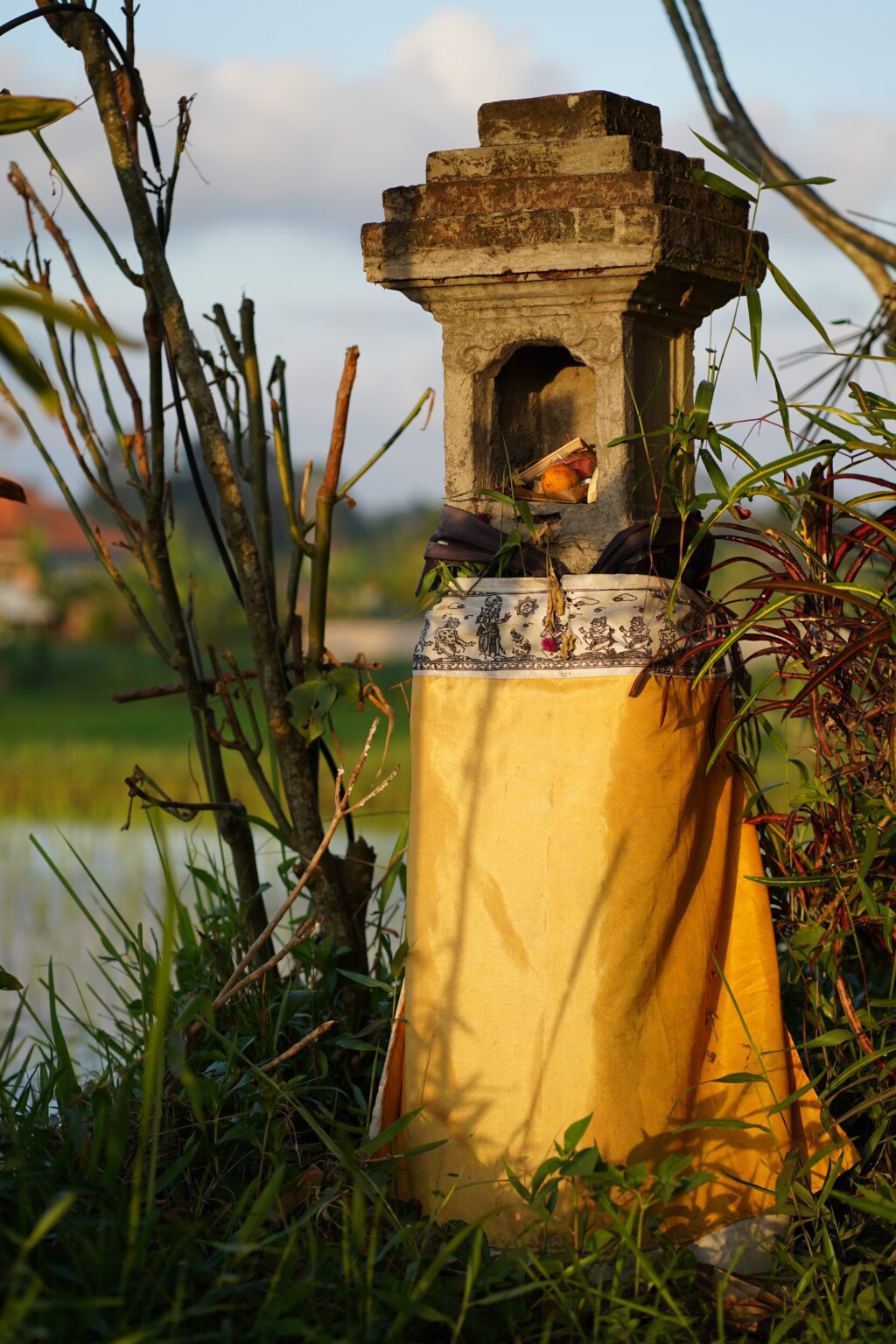
12. Sayan
Sayan is a charming village a short ride away from Ubud. Known for its tranquil atmosphere and beautiful surrounding landscapes.You can take a leisurely stroll through the town and its rice fields, or even take a guided tour to learn more about the traditional farming practices used by Balinese farmers.
In addition to the rice paddies, Sayan is also home to many beautiful resorts and spas, which offer a range of wellness and relaxation services. Sayan is also known for its art and culture, with many galleries and workshops showcasing the work of local artists and artisans. It’s a perfect get-away to a quaint village without the crowds.
Cost: Free
13. Layana Waterfall
Layana Waterfall is one of the most accessible waterfall that’s just east of Ubud. This stunning waterfall is relatively small, with just two steps, but it’s just as beautiful as any of the wonderful waterfalls around the area. Unlike some of the other waterfalls, Layana Waterfall can be seen without any hiking or entrance fee.
Cost: Free
14. Gili Islands
Another excursion from Bali is towards the Gili Islands, a group of three small islands located off the northwest coast of Lombok. There are plenty of tour operators in Ubud that offer a transfer towards Padang Bai where you can take a boat ride to the islands.
They’re popular for their beautiful beaches, clear turquoise waters, and vibrant coral reefs. Each island has its own unique character: Gili Trawangan is known for its lively nightlife and party scene (we had a LOT of fun in Gili T), Gili Air is more laid-back, and Gili Meno is relaxed and secluded. The islands are car-free and transport is mainly by bicycle.
Cost: Depends but fastboats range from 20-30 USD
Top Things to Do in Ubud
15. Try out Yoga or Meditation Retreats
There are many different yoga and meditation retreats in Ubud, each offering their own unique approach and style. Some retreats focus on traditional Balinese practices, while others offer more modern and Westernized approaches to yoga and meditation.
Many of the retreats are located in beautiful natural settings, surrounded by lush tropical gardens or overlooking stunning rice paddies. Some would be deep in the jungles so it all depends on what you’re looking for. Here’s a yoga and meditation session in Penulisan temple that includes healing and aura cleansing.
16. Get a Soundbath at the Pyramids of Chi
The Pyramids of Chi offers a unique and transformative wellness experience that combines the use of pyramid-shaped structures with the healing power of sound.
During a sound healing session at the Pyramids of Chi, you’ll lie down on a mat in the pyramid while a trained sound healer plays a range of instruments, including gongs, drums, and singing bowls. The sound waves created by these instruments are said to resonate with the body’s energy centers, promoting relaxation, stress relief, and overall well-being.
The use of pyramid-shaped structures for sound healing is based on the belief that the pyramid’s unique energetic field can amplify and focus the body’s natural energy fields (think Egypt‘s pyramids!). The shape of the pyramid is said to create a vortex of energy that can stimulate the body’s natural healing processes, promote relaxation, and reduce stress and anxiety.
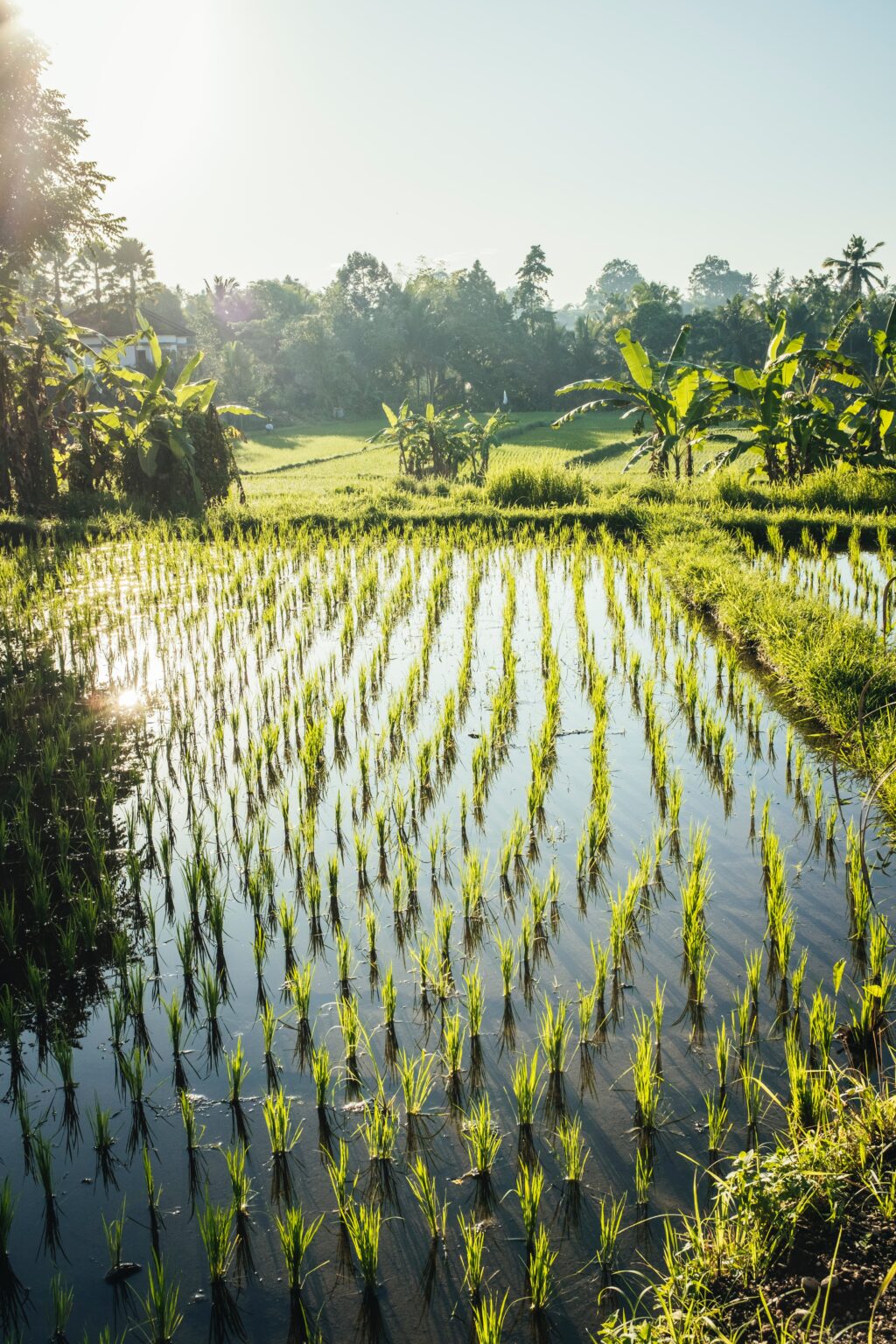
17. Dine with a View
What better way to eat Balinese cuisine than by having a panoramic view of natural sceneries?
There are many restaurants in Ubud that offer beautiful views of the surrounding landscape. Some of the most popular restaurants with a view include Jungle Fish, which offers a stunning infinity pool overlooking the jungle, and Bridges Bali, which provides a breathtaking view of the Ayung River.
18. Take a Balinese Cooking Class
One of the best ways to immerse yourself in Balinese culture is to learn about its cuisine. Taking a Balinese cooking class is a fun and interactive way to do just that. There are many cooking classes available in Ubud, ranging from small, family-run operations to larger, more commercialized ones.
The classes, led by an experienced local chef, typically begin with a visit to a local market, where you’ll select fresh ingredients and learn about the different spices and herbs used in Balinese cuisine. After the market visit, you’ll return to the cooking school, where you’ll learn to prepare a range of traditional Balinese dishes, such as the classic nasi goreng, satay, and lawar.

19. Watch the Kecak Dance Performance
The Kecak Dance is a traditional Balinese dance that has been performed for centuries. This dance tells the story of the Hindu epic Ramayana, and is accompanied by a choir of male dancers who wear traditional Balinese costumes, chanting “cak” in unison, creating a mesmerizing and rhythmic sound. The chant of “cak” is said to represent the sound of monkeys, as the story of Ramayana features a monkey army that helps Lord Rama in his journey.
One of the most popular venues for Kecak Dance performances is the Pura Dalem Taman Kaja temple in Central Ubud.
The Ramayana is one of the most important pieces of work not only in Bali but in Hinduism as a whole. It narrates the journey of Lord Rama, one of the avatars of Vishnu, as he conquers evil and reunite with his wife Sita.
Interstingly, there’s also a similar dance in Thai culture known as the Khon dance which depicts scenes from the Ramakien, a Thai adaptation of the Ramayana.
20. Experience a Balinese Massage
Balinese massage involves a combination of gentle stretches, acupressure, and aromatherapy. It’s the perfect way to end a day of exploration. After the massage you’ll feel invigorated to tackle another day of adventure!
There are many spas and massage centers in Ubud that offer Balinese massage and it usually takes place in a serene and peaceful setting, with soft music and aromatherapy oils adding to the relaxing ambiance. During the massage, the therapist uses a variety of techniques to manipulate the muscles and joints, including palm pressure, kneading, and stretching.
The massage is typically performed using warm oil, which helps to relax the muscles and promote circulation. Acupressure involves applying pressure to specific points on the body to relieve tension and promote relaxation. This technique is said to stimulate the body’s natural healing processes, and can be used to relieve a range of ailments, from headaches to digestive issues.
21. Go Rafting in Ayung River
For the thrill-seekers and adrenaline junkies, the Ayung River is one of the most popular spots for rafting, offering a range of rapids that are suitable for both beginners and experienced rafters. Along the way, you can also take breaks to swim in the river or admire the waterfalls and other natural features.

22. Peruse Balinese Arts & Crafts
Ubud is known for its vibrant arts and crafts scene, with a range of local artisans and craftsmen creating beautiful and unique pieces of art.
From traditional woodcarvings to intricate silver jewelry, there is no shortage of beautiful and high-quality arts and crafts to peruse in Ubud. Head on over to the Ubud Art Market to find a wide variety of handmade goods, including batik textiles, paintings, woodcarvings, and more. The market is also a great place to practice your bargaining skills, as many vendors are open to negotiating prices.
The John Hardy Workshop and Showroom is one of the best places to see Balinese silver jewelry being made by skilled craftsmen. Many of the artists and craftsmen in Ubud are passionate about preserving traditional techniques and materials so it’s a great way to support local artisans and businesses.
Where to Stay in Ubud
Ubud has some of the most charming accomodations, you can really feel pampered and cozy at the same time whether you’re in a hotel or a hostel. Here are some my recommendations on where to stay in Ubud:
Best Hotels in Ubud
- Alam Terrace Cottages – is a hotel located a 5-minute drive from the Monkey Forest, offering an outdoor pool and restaurant. Rooms come with air conditioning or fan and some include a tea/coffee maker, flat-screen satellite TV, balcony, refrigerator, and wardrobe.
- Alamdini Resort Ubud – is a stylish accommodation with a large outdoor pool overlooking lush tropical greenery, as well as an on-site restaurant serving local cuisine. The resort provides free WiFi access throughout the premises. Air-conditioned suites are equipped with a safety deposit box, flat-screen TV, and mini-bar, and some units have a balcony.
- Sakti Garden Resort & Spa – offering an outdoor swimming pool, free private parking, a garden, and a terrace.The resort provides a 24-hour front desk, room service, airport transportation, and free WiFi throughout the property. Rooms come with a private bathroom, and some have a balcony and garden view.
Best Hostels in Ubud
- Kuna Bali – featuring an outdoor swimming pool, garden, shared lounge, and bar. The property is within a 7-minute walk of Ubud Monkey Forest and offers massage services, evening entertainment, and free WiFi throughout the premises. Breakfast is available daily with continental, vegetarian, and vegan options.
- Pillow Inn Ubud – offering two swimming pools and a garden. The hostel features a restaurant, a 24-hour front desk, and free WiFi. All guest rooms come with a seating area and air conditioning, and some rooms have a terrace. The hostel also offers yoga classes twice a week, and drinks and barbecue on Sundays.
- Sunshine Vintage House – offering air-conditioned rooms, a garden, and free WiFi. The rooms at the hostel include a desk, bed linen, and a balcony with a garden view. All rooms feature a safety deposit box.
How to Get Around Ubud
- Walking: Ubud is a great place to explore on foot, with many of its attractions located within walking distance of each other. Walking is also a great way to soak up the local culture and get a sense of the town’s unique atmosphere. Though some of the areas would really requires some wheels such as Gunung Kawi or Tirta Empul.
- Bicycle or E-bikes: Renting a bicycle is another popular way to explore Ubud. Many hotels and guesthouses offer bike rentals, and there are also several rental shops in town. Cycling is a great way to explore the surrounding countryside and rice paddies, and it allows you to go at your own pace. E-bikes are also another great option especially for those inclines.
- Scooter: One of the most convenient and popular ways to explore Ubud. Scooters are versatile and affordable. The only issue I had with this is the traffic of Bali, it can get a bit unnerving for an inexperienced driver, my friend who was driving us at that time actually had to get down and push the scooter instead.
- Taxi: Taxis are readily available in Ubud, but do note that even though Grab and Gojek are advertised as available in Ubud, in reality, there is a taxi mafia that restricts where they’re allowed to go so either negotiate with an actual taxi or agree with the driver beforehand on where to meet and where they’ll drop you off if you’re using a ride-hailing app.
- Rental Car: For those who prefer a more comfortable and private mode of transportation, private car rentals are also available in Ubud. This is, of course, the most expensive way but during the hotter times of the year, the air-conditioning of the car is a life-saver.
- Tour: If you want to escape the hassle of planning and logistics then joining a tour is also a great way to explore Ubud, most likely you can reach even further places such as Tanah Lot if you join one.
If you need further help to get around Bali or Indonesia, whether it’s land, air, or sea, I recommend trying out 12Go as they have a comprehensive network around Southeast Asia.

How to Stay Safe in Ubud
Ubud is a generally safe place, as is Bali. You can walk alone at anytime day or night, you’ll feel safe either way. As always, exercise a little bit of caution against petty theft, don’t touch drugs and watch your drinks.
The taxi mafia can get a bit aggressive as I think they really have some rivalry against Grab and Gojek so make sure your taxi doesn’t encroach their “territory.”
Be careful when interacting with the monkeys in the Sacred Monkey Forest Sanctuary, especially don’t touch the babies as the mothers can be quite protective. In general, it’s better not to touch the monkeys as they can be quite unpredictable.
I always recommend getting travel insurance before going to exotic destinations for that peace of mind.
Best Time to Visit Ubud
The best time to visit Ubud is during the dry season, which runs from April to October. During this time, the weather is generally sunny and dry, with low humidity and comfortable temperatures. Temperatures during the dry season typically range from 24°C to 31°C (75°F to 88°F), making it an ideal time for outdoor activities such as hiking, cycling, and exploring the town’s many cultural and historical attractions.
The rainy season in Ubud runs from November to March, with January and February being the wettest months. During this time, the weather can be unpredictable, with frequent rain showers and higher humidity levels. Temperatures during the rainy season typically range from 22°C to 29°C (72°F to 84°F), and while it may be wetter, it can still be a good time to visit for those who don’t mind a bit of rain. During this time, the rice paddies and surrounding forests are lush and the town is less crowded.
What to Pack For Ubud
- Adapter plugs: Bali uses a two-pronged power outlet (type C and F)
- Light and breathable clothing: Ubud has a warm and humid climate, so it is important to pack light and breathable clothing. Cotton and linen are good options, and it’s recommended to bring a mix of shorts, t-shirts, and lightweight pants or skirts.
- Sun protection: Indonesia is located near the equator, and the sun can be intense
- Insect repellent: Bali is also known for its mosquitoes and other insects, especially the notorious dengue fever so make sure you’re protected from insect bites
- Rain gear: Weather can be unpredictable so it’s pack some rain gear just in case
Plan Your Trip to Ubud | Best Travel Resources
Book Your Accommodations
- Booking.com – the world’s leading online booking platform for accomodations around the world, they have an extensive amount of available listings with zero booking fees and best price guarantees.
- Hostelworld – a backpacker’s best friend, Hostelworld has the largest collection of hostels and guesthouses for affordable prices.
Don’t Forget Insurance
- SafetyWing – from Nomad Insurance, an insurance by nomads for nomads. They understand our lifestyle well and have really comprehensive and flexible plans that cater to any traveler.
Find Cheap Flights
- Kiwi.com – my go-to for booking and finding the cheapest flights and it’s helped me save tons of money. They do virtual interlining which is connecting flights from airlines that do not codeshare, so you can find routes that you wouldn’t be able to find normally.
Join Tours & Activities
- GetYourGuide – is one of the best places to find unique tours and activities. I found that it’s an excellent way to meet fellow travelers and create fond memories. They are not only limited to tours as they also offer niche services such as skip-the-line tickets or private transfers.
Catch a Ride
- Rentalcars.com – nothing beats the freedom of the road, Rentalcars.com is the world’s largest online car rental service. They operate across 160 countries so they’re the perfect partner to work with if you find yourself wanting a ride.

